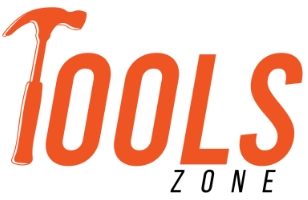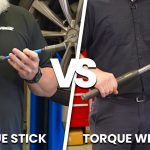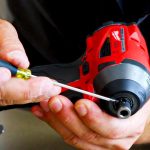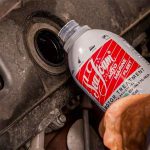Hi! My name is Jeffrey and I love working with metal. I make all kinds of things from metal like sculptures, car parts, railings, and more. One of the great things about metal is that when it’s new, it has a mirror-like shine to it. But over time, metal can lose that shine and become dull and scratched.
When I’m making something new, I want it to have that fresh-from-the-factory look. And for used pieces, I enjoy bringing back the original luster and shine. That’s why aluminum polishing wheels have become one of my favorite metalworking tools. Let me tell you all about polishing wheels and why I find them so useful!
What Are Polishing Wheels?
Polishing wheels, also known as buffing wheels, are circular tools made from dense bundles of thread. The threads are tightly packed together to form the wheel shape. Cotton and wool threads are commonly used. An abrasive polishing compound is applied to the wheel to remove defects from the metal surface during buffing.
There are a few different types and grades of polishing wheels:
- Coarse wheels – Coarse wheels have thick, stiff fibers perfect for removing scratches, oxidation, and other defects quickly. They are typically brown or red in color. Coarse wheels are very aggressive cutters.
- Medium wheels – Medium polishing wheels have a medium fiber thickness good for general purpose smoothing and polishing. They are usually orange or yellow. Medium wheels provide a nice balance of cutting speed and smoothness.
- Fine wheels – Fine wheels have very soft, delicate fibers that produce an extremely smooth, shiny, mirror-like finish. They are white or cream-colored. Fine wheels are used for the final polishing stages.
The wheels attach to a power tool like a bench grinder or drill which spins the wheel at high speeds. When pressed against the metal with a polishing compound applied, the spinning motion removes imperfections and creates a polished finish.

Why Use Polishing Wheels?
I’ve tried various metal polishing methods over the years – doing it by hand, using power tools without wheels, and more. But using polishing wheels delivers the best results by far.
Here are the main reasons polishing wheels work so well:
Extremely Fast Polishing Time
The high rotational speeds of the power tools allow the polishing wheels to remove material very quickly. I can get the job done in just a fraction of the time compared to hand polishing. What used to take me hours or even days of difficult labor now only takes a few minutes using the right polishing wheels and power tools.
For example, I recently came across some old aluminum car rims that were very scratched and dull. I was able to mount them on a bench grinder and use a coarse red polishing wheel with aluminum polish to buff them shiny again. Each wheel took me around 10-15 minutes compared to what could have been days of rubbing by hand!
More Consistent, Uniform Results
When polishing by hand, it’s almost impossible to apply consistent pressure over the entire surface. I inevitably end up with some areas polished more than others. But polishing wheels distribute force evenly as they spin at high speeds. This gives a uniform finish over the whole piece.
Just yesterday I was polishing a stainless steel barbecue grill hood that had some minor surface scratches. I simply mounted a medium yellow polishing wheel on my drill and went over the entire hood. In just a couple of passes, I had a perfectly smooth surface free of any scratches. Doing that by hand would have taken lots of time and some areas still wouldn’t be perfect.
Extremely Smooth, Mirror-Like Finishes
The soft fibers of polishing wheels provide a smoother finish than other power tool methods like sanding discs or wire wheels. While those tools grind away the surface, polishing wheels gently glide over imperfections. I’m always amazed at the smooth, chrome-like finishes I can achieve.
Recently I made a decorative aluminum wall panel with some deep hammer marks and forging textures. While I liked the look, I wanted some sections to be smoother. So I took a fine white polishing wheel with aluminum polish and lightly buffed the areas I wanted shiny. It gave some beautiful contrast between the polished and textured sections, and the smooth parts had perfect reflections.
Detail and Intricate Polishing Ability
Polishing wheels come in a wide range of sizes from just 1 inch across up to over 5 inches. The small wheel sizes allow me to polish in tight corners, crevices, and details that are difficult or impossible to reach with hands and rags.
When restoring an old classic car, I used tiny tapered polishing wheels on a die grinder to polish deep inside trim pieces and rounded beveled edges that I couldn’t polish any other way. Larger wheels let me quickly buff broad flat surfaces. Having different wheel sizes for detail work or large areas makes the process much easier.
Polishing Wheels for Different Metals
While polishing wheels offers great advantages, I’ve learned specific wheels and compounds work better for certain metals. Here’s an overview:
Aluminum Wheels
Aluminum is a soft, easy-to-polish metal. But it also oxidizes quickly when exposed to air. For rough, pitted aluminum, I start with a coarse brown or red polishing wheel and strong aluminum polish to level the surface.
Next, I’ll switch to a medium orange or yellow wheel with aluminum polish to smooth out any deeper scratches. Finally, an extremely fine white polishing wheel brings out the highest shine possible. Aluminum can take a great chrome-like mirror finish when polished properly with fine wheels.
Steel and Stainless Steel Wheels
Steel and stainless steel are harder than aluminum, so they require a more aggressive approach. I use coarse red wheels and steel/stainless specific compounds first to remove defects and flatten the surface.
Then I move to softer pink or yellow wheels with the same compounds to refine the finish. Steels don’t take quite as sharp a mirror polish as softer metals, but fine white wheels can still make them very shiny. Going in the right order gives great results.
Chrome Polishing Wheels
Chrome plating has a mirror finish to start with, so it just needs a gentle polish. Aggressive red or brown wheels will ruin chrome by removing too much material. For chrome, I use soft yellow, white, or urethane wheels with chromium oxide polish specifically for chrome. This gently removes minor scratches and oxidation to restore the original bright finish.
My Top Polishing Wheel Tips
Through plenty of trial and error, I’ve picked up some useful tips for getting the most from polishing wheels:
- Always apply the polishing compound evenly across the full-wheel surface before polishing. Don’t let the wheel run dry.
- Press wheels against the workpiece firmly enough to bend the fibers slightly, but not completely flatten them.
- Keep the wheels moving constantly to avoid grinding grooves into the metal surface.
- Clean wheels regularly with a stiff brush to remove embedded metal particles that can scratch.
- For tough polishing jobs, a hard interface pad between the wheel and tool helps increase the cut rate.
- Use lighter pressure and finer wheels towards the end of polishing to get a perfect finish.
Following these tips will help you avoid common problems and get professional polishing results.

Polishing Wheels Take My Projects to the Next Level
As you can see, I’m a huge fan of aluminum polishing wheels for restoring and enhancing metalwork. While they require some investment in the wheels and power tools, the time savings and quality results are more than worth it to me.
Polishing wheels allow me to rapidly fix defects in used pieces and make them look pristine again. They also let me create beautiful mirrors and brushed metal finishes in my custom projects. I love how polishing can totally transform plain metals into bright works of art.
I hope this gives you a good overview of polishing wheels and why I find them indispensable for metalworking. Let me know if you have any other questions! I’m always happy to talk shop and help people get the most out of these useful tools. Try them on your next metal project and I think you’ll be amazed at the results.










Leave a Comment